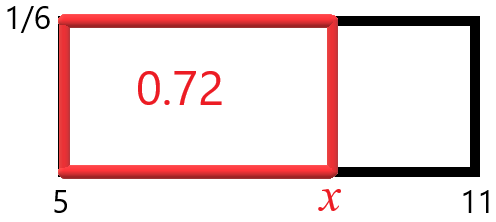11.5.4: Solving Linear Equations in One Variable
( \newcommand{\kernel}{\mathrm{null}\,}\)
Learning Outcomes
- Solve linear equations for the variable.
It is a common task in algebra to solve an equation for a variable. The goal will be to get the variable on one side of the equation all by itself and have the other side of the equation just be a number. The process will involve identifying the operations that are done on the variable and apply the inverse operation to both sides of the equation. This will be managed in the reverse of the order of operations.
Example 11.5.4.1
Solve the following equation for x.
3x+4=11
Solution
We begin by looking at the operations that are done to x, keeping track the order. The first operation is "multiply by 3" and the second is "add 4". We now do everything backwards. Since the last operation is "add 4", our first step is to subtract 4 from both sides of Equation ???.
3x+4−4=11−4
which simplifies the equation
3x=7
Next, the way to undo "multiply by 3" is to divide both sides by 3. We get
3x3=73
or
x=73
Example 11.5.4.2

The rectangle above is a diagram for a uniform distribution from 2 to 9 that asks for the first quartile. The area of the smaller red rectangle that has base from 2 to Q1 and height 1/7 is 1/4. Find Q1.
Solution
We start by using the area formula for a rectangle:
Area=Base×Height
We have:
- Area = 14
- Base = Q1−2
- Height = 17
Plug this into Equation ??? to get:
14=(Q1−2)(17)
We need to solve for Q1. First multiple both sides of Equation ??? by 7 to get:
7(14)=7(Q1−2)(17)74=Q1−2
Now add 2 to both sides of Equation 11.5.4.8 to get:
74+2=Q1−2+274+2=Q1
or
Q1=74+2
Putting this into a calculator gives:
Q1=3.75
Example 11.5.4.3: z-score
The z-score for a given value x for a distribution with population mean μ and population standard deviation σ is given by:
z=x−μσ
An online retailer has found that the population mean sales per day is $2,841 and the population standard deviation is $895. A value of x is considered an outlier if the z-score is less than -2 or greater than 2. How many sales must be made to have a z-score of 2?
Solution
First we identify each of the given variables. Since the population mean is 2,841, we have:
μ=2841
We are told that the population standard deviation is 895 meters, so:
σ=895
We are also given that the z-score is 2, hence:
z=2
Now we put the numbers into the formula for the z-score to get:
2=x−2841895
We can next switch the order of the equation so that the x is on the left hand side of the equation:
x−2841895=2
Next, we solve for x. First multiply both sides of the equation by 895 to get
x−2841=2(895)=1790
Finally, we can add 2841 to both sides of the equation to get x by itself:
x=1790+2841=4631
We can conclude that if the day's sales is at $4631, the z-score is 2.
Exercise
The rectangle below is a diagram for a uniform distribution from 5 to 11 that asks for the 72nd percentile. The area of the smaller red rectangle that has base from 5 to the 72nd percentile, x, and height 1/6 is 0.72. Find x.



